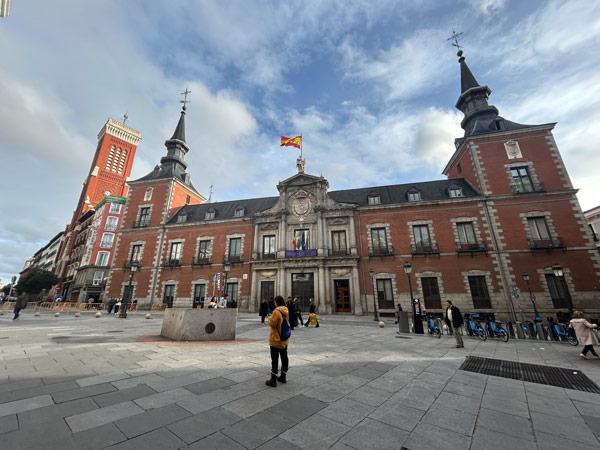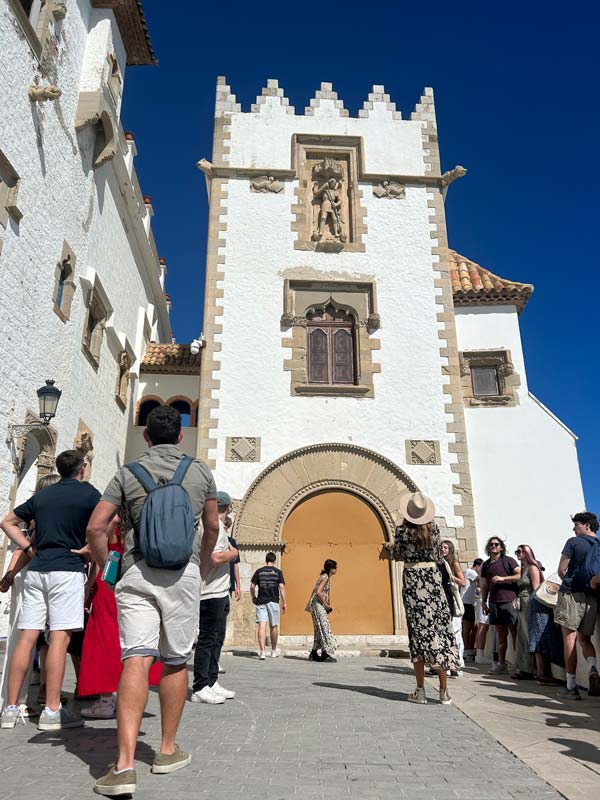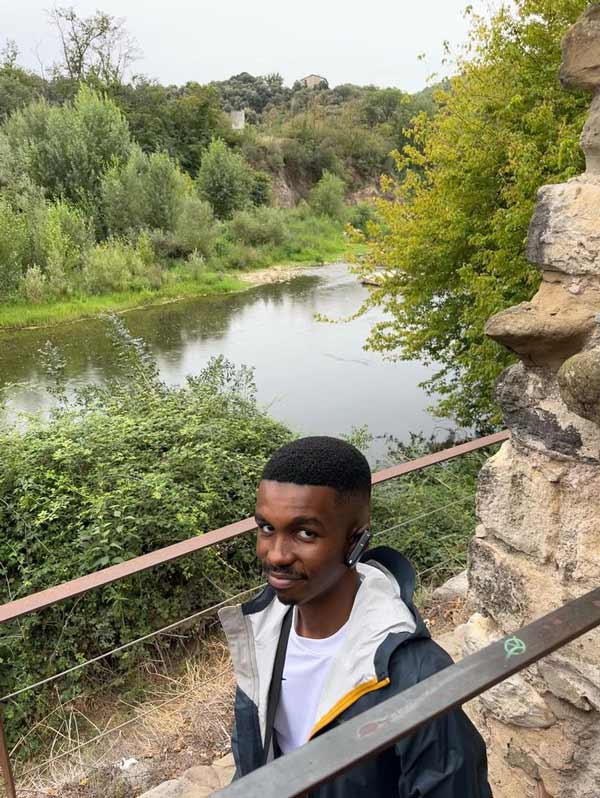4 Tips for Cultural Immersion While Studying Abroad in Barcelona, Spain

The Santa Cruz Palace, the headquarters of the Spanish Ministry of Foreign Affairs, in Madrid
1. Speaking With Locals
A part of any culture is its language. So, every day while studying abroad in Barcelona, I try to find ways to not only practice Spanish but do so in a way that connects with the culture. This can take many forms. When I’m out and about at a museum, grocery store, or café, I make it a habit to speak in Spanish from the start. I can’t lie though. It would be so much easier to speak in English during everyday exchanges, especially as many people in the touristy parts of Barcelona speak the language. But taking this approach would mean me not seeing much improvement in my Spanish. And plus, I’ve found that interactions are often richer when they are conducted en español!
Of course, there are times when a word or a phrase escapes my mind. But in such cases, I still try to speak in Spanish. If I can’t remember a specific word, then I try to describe it using other ones. And if even this last-ditch attempt doesn’t work, I leave wherever I am and call it a day. Just kidding! In this case, I would probably speak in English or find some other way of communicating.
There is no harm in practicing Spanish, especially when in a Spanish-speaking country. And if worse comes to worst, technology is our amigo—we can pull out a translation app on our phones. After such encounters, you might also find it helpful to write down a word or two that you learned and maybe another that might have been helpful during your interaction. When I do this, I find that I add to my vocabulary.
2. Chatting With Friends

My friends and I enjoying a tour in Penedès
One of the most rewarding language-learning experiences I’ve had so far is practicing Spanish with my peers at different cafés in Barcelona. Our fun get-togethers or ‘Café-Olé’ as it’s called, are organized by CEA CAPA almost every other week, so it’s been a consistent way to get better at the language. And one of the coolest parts about it is that we always have a native speaker with us to help guide our conversations and improve our skills.
This structure creates a low-pressure environment where we are free to express ourselves, make mistakes, and learn from them all while enjoying delicious snacks each café has to offer. So, building or belonging to a language-learning community is definitely something I’d recommend!
3. Watching Shows and Films with Spanish Subtitles and Audio
Most of us already watch awesome shows and movies tailored to our interests, right? So, could we add a learning component to our entertainment by setting subtitles to Spanish? Sure, we can! This is one of the most common language learning tips I’ve come across over the years, and that’s because it’s effective. By turning on subtitles, we have the opportunity to learn how and when to express ourselves in different ways. We can also learn about the context in which certain expressions are used based not only on words but also on gestures and facial expressions to also get a feel for how certain expressions are expressed. From sci-fi shows to cultural ones, we have access to a seemingly endless list of options.
I’ve also found it helpful to do the reverse—watching content with Spanish audio, but with English subtitles. This helps practice my listening skills a little more than my reading and comprehension skills, as in the other case. Regardless of your chosen method, you’ll quickly find yourself absorbing new words and phrases, and, of course, having fun along the way!

Students and tourists admire the Maricel Museum

Yours truly exploring Besalú during a tour
4. Listening to Spanish Content
Regardless of the type of content you like, you can probably engage with it via audio in Spanish. Listening to podcasts is one of the methods I’ve found most helpful, partly because it makes the learning process fun and challenging. Sometimes, it even makes what I’m listening to more interesting because I’m encouraged to notice nuances here and pay more careful attention to grammatical rules there. The beauty of podcasts is that the pace of conversations tends to be what one might encounter on any given day. There is this natural back-and-forth flow between speakers and hearing how they interact with each other allows one to observe examples of what sentence structures (and even jokes!) might look like. One of my favorite podcasts, How to Spanish, does this well.
There’s also a cool app called Radio Garden that allows you to tune into radio stations all over the world. By swiping the globe on the screen, you land on a region, and whatever is on the air there automatically starts playing. From music to talk shows, you’ll discover new ways of exploring the Spanish language and culture. Plus, you’ll find it really cool hearing what people in different parts of the world are listening to at any given moment!
Regardless of how you choose to immerse yourself in the culture of your choice, I encourage you to do so in a way that’s connected to your interests and goals. Because you’ll find yourself learning and growing and having a blast along the way!

Tourists snapping pictures at Park Güell
This post was written by Sayo Adeniji, a CEA CAPA Alum, from Hofstra University and studied abroad in Barcelona, Spain.








